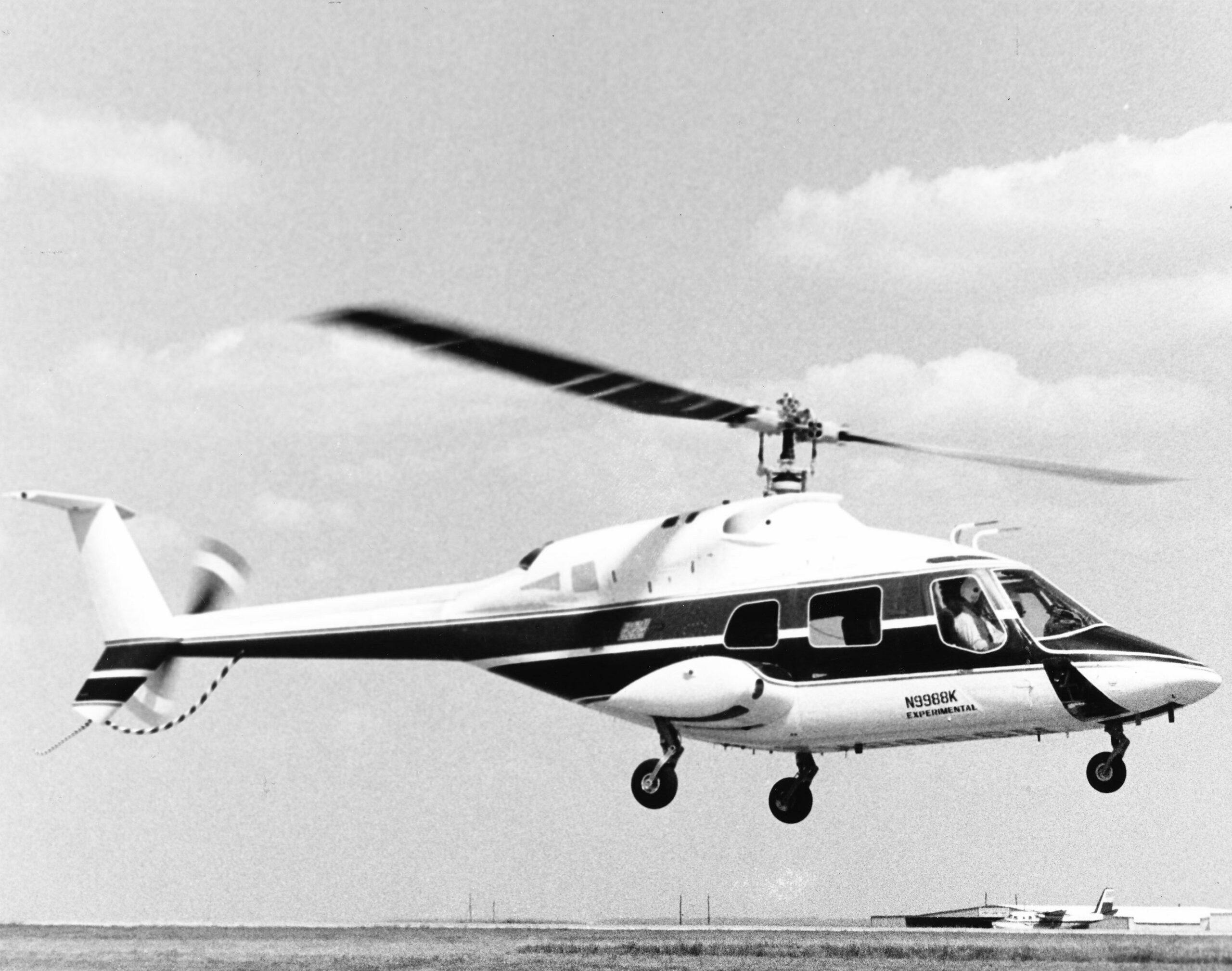
![]() 13 August 1976: At the Bell Helicopter facility at Arlington, Texas, the prototype Model 222 twin-engine helicopter, registration N9988K, made its first flight. During the 42-minute flight, test pilots Donald Lee Bloom and Louis William Hartwig flew the aircraft through a series of hovering maneuvers and transitions to forward flight. A Bell spokesperson described it as, “One of the most successful prototype flights we’ve ever had.”
13 August 1976: At the Bell Helicopter facility at Arlington, Texas, the prototype Model 222 twin-engine helicopter, registration N9988K, made its first flight. During the 42-minute flight, test pilots Donald Lee Bloom and Louis William Hartwig flew the aircraft through a series of hovering maneuvers and transitions to forward flight. A Bell spokesperson described it as, “One of the most successful prototype flights we’ve ever had.”
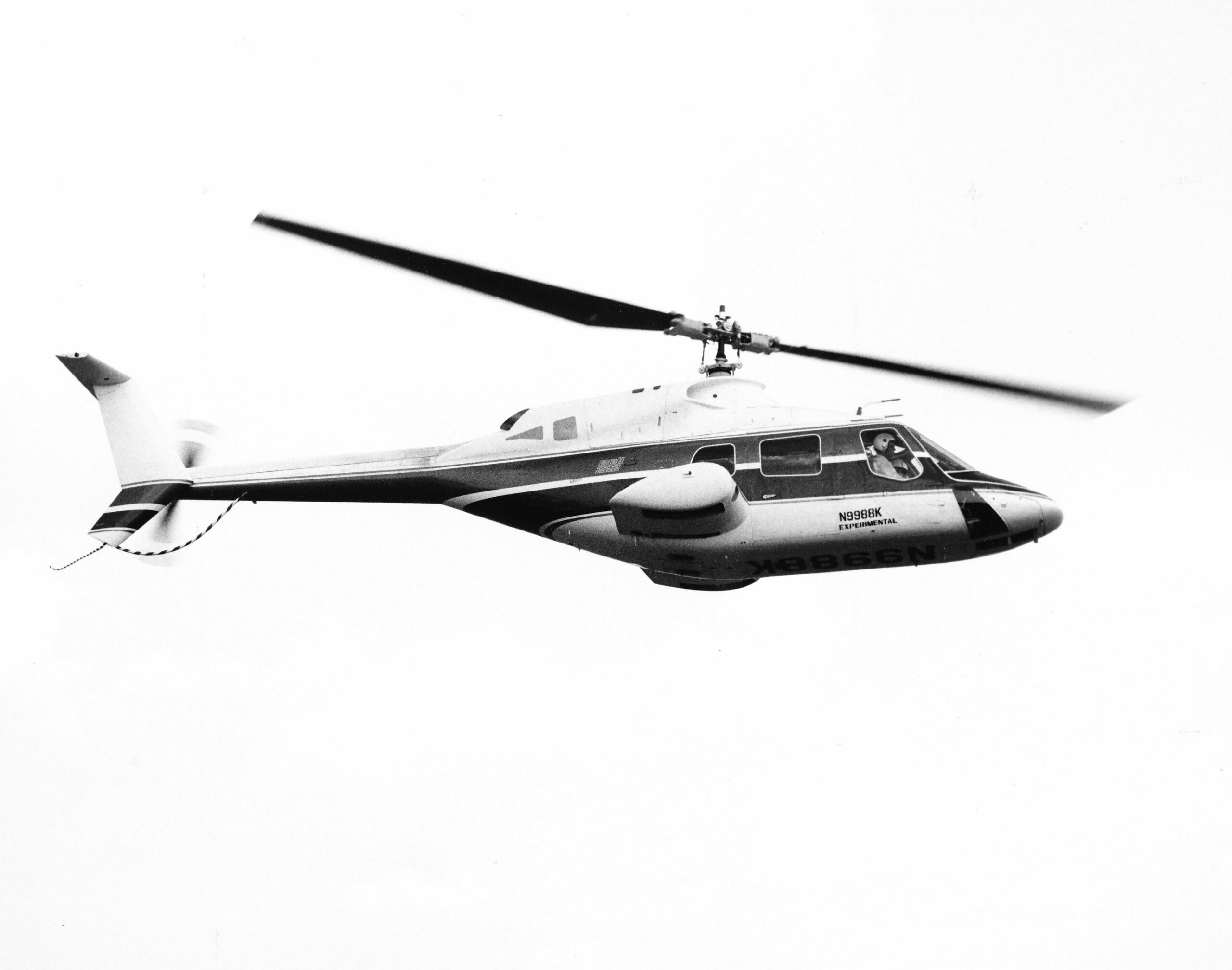
The Model 222 (“Two Twenty-Two”) was Bell Helicopter’s first completely new helicopter since the Model 206 JetRanger series. Classified as a light twin, the aircraft was originally powered by two Lycoming LTS101-650C-3 turboshaft engines. The two-blade main rotor was similar in design to that used on the AH-1 Cobra attack helicopters. The first four prototypes were built with a T-tail configuration, but problems discovered early in the test program resulted in a change to the arrangement used in the production version.
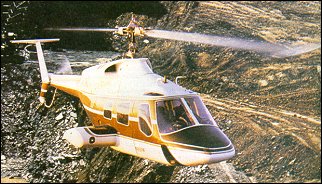
The Bell 222 is used as an executive transport, a utility transport and an aeromedical helicopter. It can carry a maximum of ten persons, and is operated with either one or two pilots. The 222 is certified for Instrument Flight Rules. The standard aircraft has retractable tricycle landing gear but the Model 222UT replaces that with a lighter weight skid gear.
The Bell Model 222 is 47 feet, 6.16 inches (14.482 meters) long with rotors turning. The helicopter has a maximum height of 14 feet, 7.25 inches (4.451 meters) with the forward main rotor blade against its droop stop. The height from ground level to the top of the vertical fin is 11 feet, 0.56 inches (3.367 meters). The helicopter’s maximum width is 11 feet, 4.0 inches (3.454 meters). The empty weight is 4,555 pounds (2,066 kilograms), and the maximum gross weight is 7,848 pounds (3,560 kilograms).
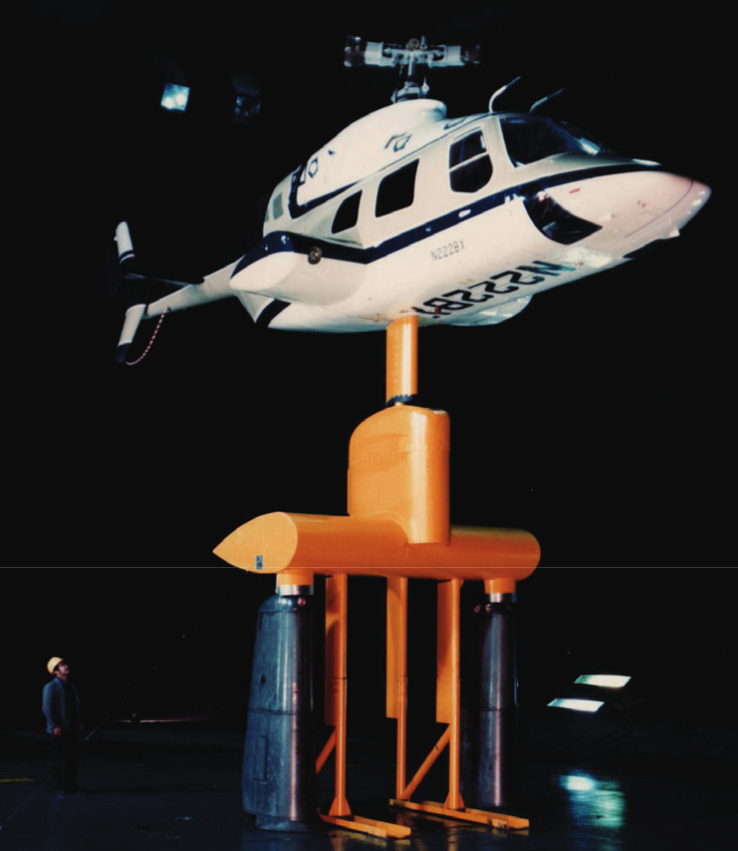
The 222’s main rotor mast is tilted 5° forward and 1° 15′ to the left. This contributes to a higher forward air speed and counteracts the helicopter’s translating tendency in a hover.
The two-bladed, underslung, semi-rigid main rotor system rotates counter-clockwise as seen from above (the advancing blade is on the right.)and turns 324 r.p.m at 100% NR. The main rotor has a diameter of 39 feet, 9.0 inches (12.116 meters). The blades have a chord of 2 feet, 4.6 inches (7.264 meters) and are pre-coned 3° 30′. The two-bladed tail rotor is positioned on the left side of the tail boom and turns clockwise as seen from the helicopter’s left (the advancing blade is below the axis of rotation). The tail rotor’s diameter is 6 feet, 6.0 inches (1.981 meters). The blades’ chord is 10.0 inches (0.254 meters).

The Bell 222 has a maximum speed of 130 knots. Its hover ceiling is approximately 9,000 feet (2,743 meters). The service ceiling is 12,800 feet (3,901 meters). The maximum range is 324 nautical miles (373 statute miles/600 kilometers).
During early production, problems were experienced with the LTS101 engines, which were also used on the Sikorsky S-76 and the Aérospatiale AS-350D A-Star. This seriously hurt the reputation and sales of all three helicopters. Bell Helicopter’s parent corporation, Textron, bought the Lycoming factory and modernized it in order to improve the engine. (The engine is now owned by Honeywell Aerospace.) Operators began to replace the two Lycoming engines with a pair of Allison 250-C30 turboshafts, and eventually Bell Helicopter modified the aircraft, marketing it as the Model 230. A four-bladed variant with a longer cabin is called the Model 430.
After the test program was completed, the first prototype, N9988K, was used as a static prop on the popular television series, “Airwolf.”


Donald Lee Bloom was born in Tulsa, Oklahoma, 23 April 1932. He was the son of Fred Miles Bloom, a telegraph operator for the Standard Oil Company, and Georgia Randolph Bloom.
Don Bloom attended the University of Houston as a Naval Reserve Officers Training Corps (NROTC) midshipman. He graduated in 1955. Bloom was commissioned as a second lieutenant, United States Marine Corps, 15 September 1955. He was assigned to pilot training at NAS Pensacola, Florida.
Lieutenant Bloom was promoted to the rank of first lieutenant, 15 March 1957. He married Miss Anne Marie Carruthers in Los Angeles, California, 5 September 1958. They would have four children, Susan, Stacy, Robert and Todd.
Lieutenant Bloom was released from active duty in 1960, and joined the Kaman Aircraft Corporation as a test pilot. In 1961, began his 29-year career as an experimental test pilot with the Bell Helicopter Company.
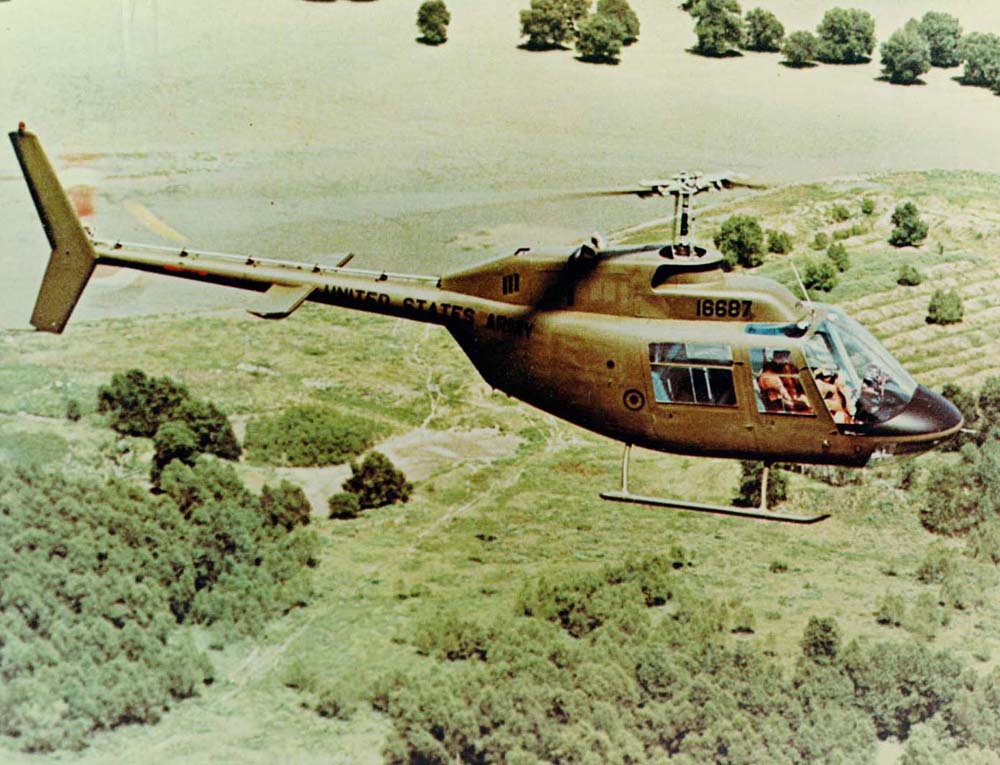
In 1984 the Society of Experimental Test Pilots gave its Iven C. Kincheloe Award to Don Bloom for his experimental research into the Loss of Tail Rotor Effectiveness (LTE).
After flying as a test pilot on 187 projects, Don Bloom retired from the Bell Helicopter Corporation in 1990 as Senior Experimental Test Pilot. He then worked for the Federal Aviation Administration Southwest Region as its Designated Engineering Representative Flight Test Pilot, testing aircraft for government certification. During his aviation career, Bloom flew over 14,000 hours in 102 different aircraft.
In 2011, the Federal Aviation Administration presented its Wright Brothers Master Pilot Award to Don Bloom.
Donald Lee Bloom died 18 July 2017 at Grapevine, Texas. He was buried at the Dallas-Fort Worth National Cemetery, Dallas, Texas.
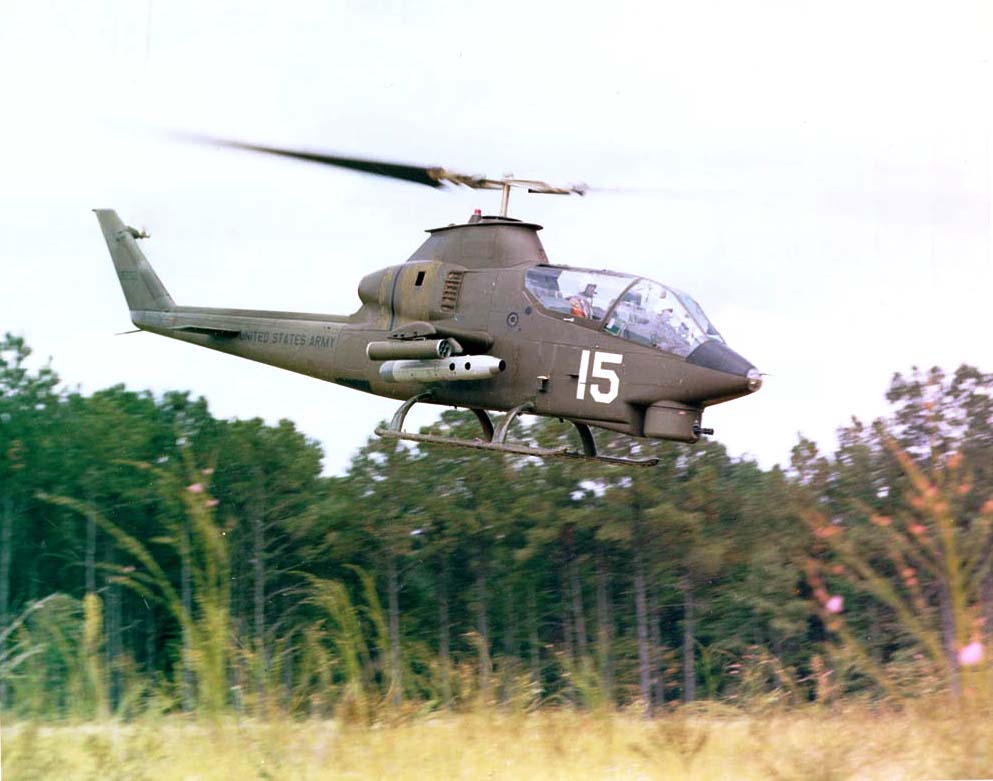
Louis William Hartwig was born at Sherman, Iowa, 26 July 1922. He was the son of Lawrence C. Harwig and Alta May Gaughey Hartwig. He attended Bowie High Schoo in Bowie, Texas.
Lou Hartwig enlisted in the United States Army 8 September 1942. (s/n 17119277) He was assigned to the 304th and 902nd Field Artillery Battalions, 77th Infantry Division.
Lou Hartwig married Miss Katherine Elizabeth Healzer, a school teacher, at Rustburg, Virginia, 19 February 1944. They would have a son, Ronald.
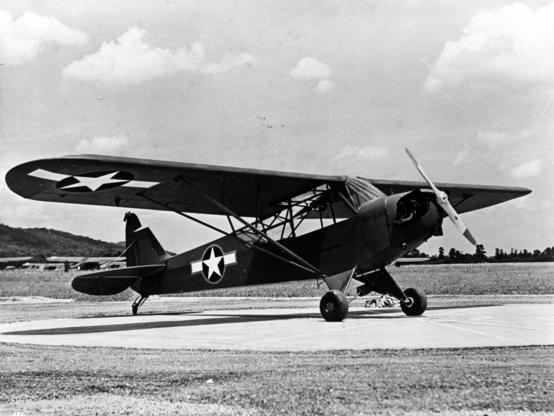
Hartwig was deployed to the Pacific theater of operations, 24 March 1944. He flew a Piper L-4 Grasshopper as an artillery spotter at Guam and Okinawa. He was discharged from his enlistment 18 June 1944, and commissioned a second lieutenant, 19 June 1944 (s/n O-1821011). Lieutenant Hartwig returned to the United States on 21 November 1945. He was released from active duty 24 January 1946.
Lou Hartwig was one of the early students of the Bell Aircraft Corporation’s helicopter flight school at Niagara Falls Airport, New York. The school was for experienced pilots only, and required 10–15 days to complete. Each student received a minimum 22½ flight hours in a Bell Model 47. The cost of the course was $600. Hartwig was then employed as an agriculture “crop dusting” pilot in California.
While spraying insecticide in a field near Sacramento, California, Hartwig was overcome by the poisonous chemicals and lost consciousness. The helicopter struck power lines and crashed. Hartwig was thrown from the cockpit. Crash investigators described the accident as “unsurvivable.” He spent the next 11 months in hospital.
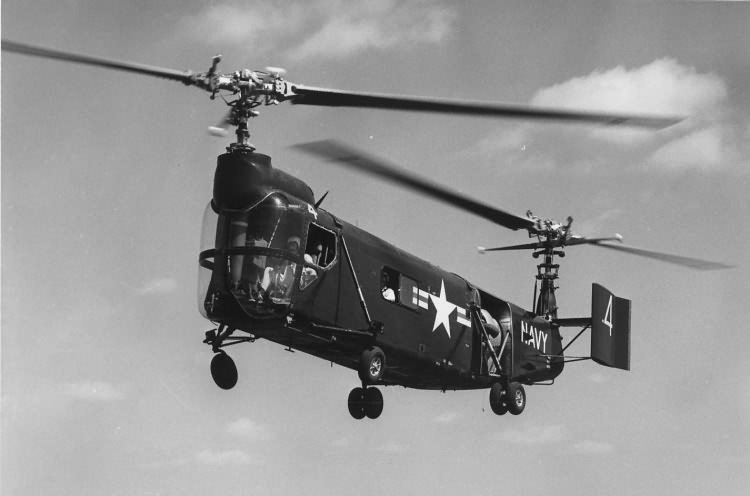
The Bell Helicopter Company hired Hartwig as a test pilot on 15 February 1955. One of his first projects was flight testing the Model 61, the only tandem rotor helicopter ever produced by Bell. It was used as an anti-submarine warfare helicopter by the U.S. Navy, designated HSL-1.
On 31 January 1961, Hartwig set a Fédération Aéronautique Internationale (FAI) World Record for Speed Over a Closed Circuit of 100 Kilometers Without Payload, when he flew a Bell Model 47J Ranger at an average speed of 168.36 kilometer per hour (104.61 miles per hour).¹
On 2 February 1961, Lou Hartwig flew a Bell Model 47G, N967B, to set three more FAI world records: Distance in a Closed Circuit Without Landing, 1,016.20 kilometers (631.44 miles); ² Speed Over a Closed Circuit of 500 Kilometers Without Payload, averaging 119.07 kilometers per hour (73.99 miles per hour); ³ and Speed Over a Closed Circuit of 1,000 Kilometers, 118.06 kilometers per hour (73.36 miles per hour.⁴ The Model 47G had been modified with an additional fuel tank from the earlier Model 47D-1, and curved landing skids from the Model 47J.
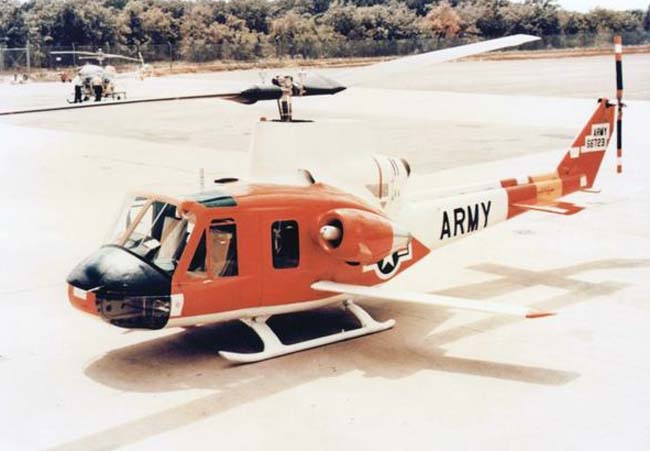
Lou Hartwig worked on the U.S. Army’s High Performance Helicopter project. A pre-production YH-40 Iroquois, serial number 56-6723, was modified into a winged and compound helicopter configuration, designated Model 533. Hartwig flew the helicopter to a speed of 274.6 knots (316.00 statute miles per hour/508.56 kilometers per hour). In 1971, the Vertical Flight Society gave its Frederick L. Feinberg Award to Hartwig.
Mrs. Hartwig died 10 February 1989, in San Diego, California. Lou Hartwig married his second wife, Joanne Dunning, in 1990.
Louis William Hartwig died 12 April 2016, at the age of 93 years. He was buried at the Dearborn Memorial Park, Poway, California.
¹ FAI Record File Number 986
² FAI Record File Number 983
³ FAI Record File Number 989
⁴ FAI Record File Number 990
© 2018, Bryan R. Swopes